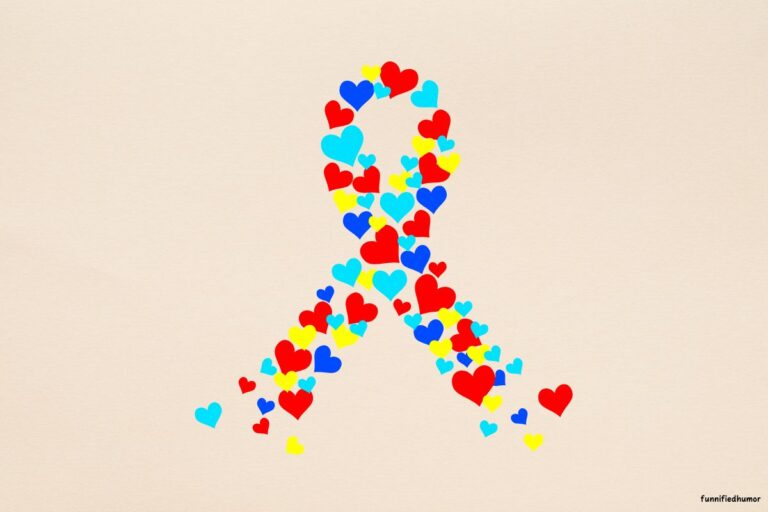3 Stories about Community You Need to Read

There’s a palpable magic in the air when we gather around and share stories about community. It’s not just about the characters or the events, but about the intricate details of lives, shared spaces, and collective dreams.
Each tale is a unique thread, yet all are part of the larger narrative that shapes us, connects us, and reminds us that we are never truly alone.
Delving into these stories, we discover the incredible power of unity, the strength in diversity, and the deep human connections that turn a mere group of people into a vibrant, thriving community.
Join us as we embark on a journey, celebrating the tales that remind us of our shared essence and the enduring spirit of togetherness.
1. A Community in Harmony
Anna had always been a beacon of light in her town. With her radiant smile and boundless energy, she had founded the “Harmony Helpers”, a community service group aimed at helping the less fortunate. Their latest initiative was to rebuild a dilapidated playground in the heart of the city, aiming to give children a safe place to play and gather.
One evening, at a Harmony Helper’s meeting, Robert, a long-time member said, “Anna, that playground is located in such a tough area. Are you sure we can make a difference there?”
Anna responded, “Robert, it’s in those areas where we can make the most impact. Remember, it’s not just about the playground, it’s about building a community.”
But not all was easy. They faced numerous challenges – funding, city permits, and even local gangs who saw the playground as their territory. It seemed like the universe was conspiring against them.
One day, as Anna was clearing the playground, a teenage boy named Miguel approached her. With a challenging tone, he asked, “What are you doing here? This is our spot.”
Anna replied calmly, “We’re trying to build a safe space for kids to play. Don’t you want that?”
Miguel smirked, “What’s it to you? Why not help somewhere else?”
Anna, remembering her own painful childhood where she had no safe haven, responded, “Every child deserves a place to be a child. I never had that, and I don’t want others to go through the same.”
Miguel’s tough exterior momentarily cracked. “Fine, but you won’t last a week here.” He stormed off.
The next day, Anna and her team arrived at the playground to find the swings they’d erected torn down. “I told you, Anna,” Robert sighed. “This place is tough.”
But Anna wouldn’t back down. Instead, she organized a community meeting. Surprisingly, Miguel turned up. Through heartfelt speeches and testimonials from residents, many began to see the value of the playground project.
After the meeting, Miguel approached Anna. “Look,” he began hesitantly, “I might have been hasty. I’m willing to help. But you need to understand our side of the story too.”
Anna listened as Miguel talked about the pain of losing his little brother to stray bullets in a gang crossfire. The playground had become a memorial of sorts for him.
Anna’s heart went out to Miguel. “Why don’t we build a memorial corner in the playground? A place where people can remember and heal?”
Miguel nodded, “I’d like that.”
Soon, Miguel and his friends became part of the Harmony Helpers. They worked side by side with Anna and her team. The playground started shaping up beautifully, but it wasn’t just about swings and slides. The community was rebuilding trust.
On the day of the playground’s inauguration, the entire neighborhood turned up. There were games, food stalls, and an atmosphere of genuine unity.
Anna, taking the stage for a brief speech, looked at the crowd and said, “This is what community looks like. It’s not just about a space. It’s about coming together, understanding, healing, and moving forward.”
The once dilapidated playground was now buzzing with laughter, and the memorial corner stood as a testament to both pain and hope.
Years later, the playground remained not just as a space for kids but also as a symbol of what a community can achieve when they come together. And at the heart of it all, was the spirit of community service that Anna had kindled.

2. A Changing Tide
The town of Waterside was built on traditions that dated back for generations. Nestled between rolling green hills and a pristine blue lake, it was a place where everyone knew each other’s names, and houses were passed down from grandparents to grandchildren.
Sue Ellen was born and raised in Waterside. She was proud of her lineage, her ancestors being among the founders of the town. “This place is in my blood,” she would often declare.
But Waterside was changing. New families started moving in, bringing with them new ideas, new cultures, and new businesses. The once homely town was now punctuated with cafes, boutiques, and modern condos.
One evening at the local diner, Sue Ellen voiced her concerns. “These new people,” she said, looking over to a table where a young couple was immersed in their devices. “They’re changing the soul of our town.”
Ray, an old friend, chuckled, “Change is inevitable, Sue. Besides, look around. The town’s buzzing with life.”
Sue Ellen sighed. “It’s not the Waterside I remember.”
The divide between the old and the new was evident. And the heart of this divide was the plan to tear down the old community center – a building that had hosted countless events, weddings, and celebrations – to make room for a modern recreational complex.
At a town meeting, emotions ran high.
“We need to preserve our history!” shouted Sue Ellen, her face red.
“History is important,” replied a young woman named Maya, “but the community center is falling apart. It’s not safe anymore. We need a space that caters to the needs of the entire community.”
The arguments went on. Old verses new. Tradition verses progress.
In a twist of fate, Maya and Sue Ellen ended up working together on the committee to decide the fate of the community center. The duo had stark differences. Maya, with her love for sustainable architecture, represented the new wave of Waterside. Sue Ellen, with her deep reverence for the past, stood firm on tradition.
One evening, as they went through old records in the community center’s basement, they found a collection of old letters. Sue Ellen’s hands trembled as she read aloud a letter written by her own great-grandmother.
“Dearest Martha,” she began, “I know many in town are against the building of this new community center. They believe we’re discarding our past. But we’re not. We’re creating a place for our children and grandchildren.”
Maya looked at Sue Ellen, her eyes softening. “Your great-grandmother believed in progress, even when it was unpopular.”
Sue Ellen nodded, wiping away a tear. “Maybe we can find a way to honor the past while building for the future.”
With renewed purpose, the two women spearheaded a plan to incorporate elements of the old structure into the new one. The facade of the new building would retain the original design, and the hallways would be lined with photographs and artifacts from Waterside’s past.
The community came together, old residents and new, to rebuild the heart of their town. The process wasn’t without challenges, but in the end, the town had a center that resonated with both its history and its future.
At the inaugural ceremony, Maya stood beside Sue Ellen. “Thank you,” she whispered, “for helping me understand the weight of our history.”
Sue Ellen smiled, squeezing Maya’s hand. “And thank you for teaching me that sometimes change can be a beautiful thing.”
From that day on, the newly designed community center became a symbol of unity in Waterside. While the town still faced its share of challenges, its residents learned the value of blending the old with the new, ensuring that the spirit of Waterside would endure for generations to come.

3. Willow Lane
In the quiet town of Clementsville, Willow Lane was known for its tight-knit community. From annual block parties to monthly book club meetings, the people on the lane shared more than just a street name. The houses, with their pastel-colored facades and manicured lawns, bore witness to friendships, alliances, and shared secrets.
But not everything was as picture-perfect as it seemed.
Jenna moved to Willow Lane in the fall of 2022. With her husband Max and their two kids, they were eager to find a sense of belonging in this close community. Jenna had always dreamt of being part of a neighborhood where kids played in the streets and adults looked out for each other.
Two days after moving in, Jenna was welcomed by Margo, the next-door neighbor. A sprightly woman in her 60s, Margo had lived on Willow Lane longer than anyone else.
“Welcome, dear!” Margo greeted with an infectious enthusiasm. “You’ll love it here. We’re all like family.”
Jenna smiled, grateful for the warm welcome. But as they chatted, she noticed Margo’s gaze frequently shift to the third house from Jenna’s, painted a shade of deep blue.
“That’s the Bennett house,” Margo whispered, her face becoming serious. “It’s been empty for years, and some say it’s haunted.”
Jenna laughed it off, thinking it was some community lore. But as days turned into weeks, she began hearing stories. Whispers about people who once lived there, mysterious disappearances, and strange noises in the dead of night.
Late one evening, Jenna’s curiosity got the better of her. She decided to take a stroll to the Bennett house. The windows were dusty, and the paint was peeling. As she approached, she thought she heard a whisper. Dismissing it as the wind, she continued until she stood right in front of the old, creaky door.
Suddenly, the door swung open, revealing a dimly lit room. Jenna, taken aback, hesitated for a moment but decided to venture inside.
The house was eerily silent except for the soft whispers Jenna kept hearing. They grew louder, as if beckoning her to follow. Jenna, a mix of fear and intrigue, walked towards the sounds.
In the main hall stood a beautiful grand mirror. Its frame was intricately designed with shapes of leaves and animals. As Jenna stood looking at her reflection, the whispers grew louder and more distinct.
“Help us,” they said. “Help us.”
Jenna, terrified, turned to flee, but a gentle hand on her shoulder stopped her. It was Margo.
“I knew I’d find you here,” Margo sighed. “I should’ve told you earlier.”
She explained that the Bennett house was the first on Willow Lane. Over the years, residents from different houses had mysteriously disappeared, their spirits believed to be trapped within the mirror.
“It’s our community’s darkest secret,” Margo admitted. “The mirror draws you in, feeds on the community spirit. We never found a way to free them.”
Jenna, still in shock, realized she was uniquely positioned to help. She rallied the community, conducting research and contacting paranormal experts. The unity and collective effort of the residents made them stronger than ever before.
Finally, a ritual was conducted to free the trapped souls. The residents of Willow Lane, arm in arm, formed a circle around the mirror, chanting incantations passed down through generations.
With a blinding flash, the mirror cracked, releasing the spirits trapped within. The entire house lit up, and when the light faded, the Bennett house was transformed, looking as new and vibrant as the rest on the street.
From that day, Willow Lane was not just a community in spirit but in truth. The Bennett house became a community center, a reminder of their shared history and triumph over adversity.
Jenna and her family found more than they hoped for in Clementsville. They discovered the strength of unity and the lengths a community would go to protect and uplift its members.
And as for the whispering houses of Willow Lane? They still whispered, but now, they spoke of love, unity, and a community that stood together through the darkest of times.





